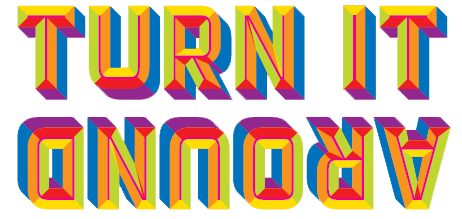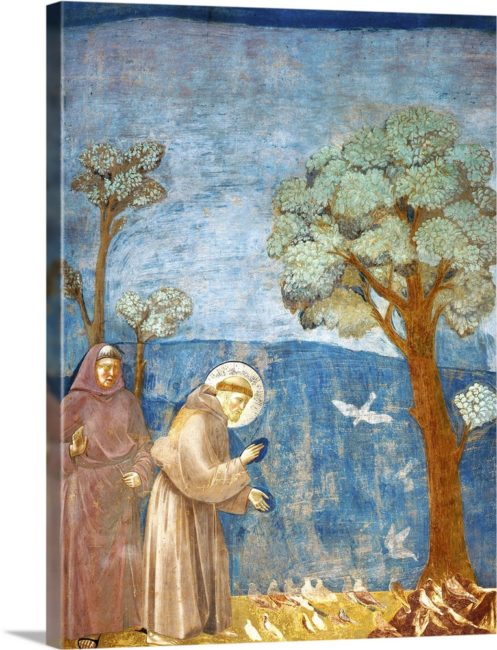Sermon — October 9, 2022
The Rev. Greg Johnston
For many people, life in a city neighborhood like ours can be transient, just one stop on a train that goes from the suburbs to a college dorm to an apartment in the city back to a house in the suburbs or maybe just the first place they could find a place to live. For some, the neighborhood is the only place they—or their parents, or their grandparents—have ever known. But for others, a city neighborhood is neither an ancestral home nor a temporary stopping place. It’s a place that they choose to make a home, even if it’s not forever. They can “plant gardens,” a Jeremiah says, knowing that they’ll be around long enough to “eat what they produce.” (Jeremiah 29:5) They can marry, and maybe have children, knowing that it’s a place that they could raise them. (29:6) They can “seek the welfare of the city,” because it is their city, and “in its welfare [they] find [their] welfare.” (29:7)
These are the prophet Jeremiah’s words. But there’s a big difference between the people to whom Jeremiah’s writing and the “yuppie long-haulers” who move into a city neighborhood and decide to stay. The people to whom Jeremiah is writing didn’t have any choice. They didn’t move to Babylon for its walkability or its amenities. They didn’t leave Jerusalem fleeing persecution or even war. They were kidnapped, and brought to Babylon, and kept there in exile, and still Jeremiah writes to them, “seek the welfare of the city where I have sent you into exile, and pray to the Lord on its behalf, for in its welfare you will find your welfare.”
Jeremiah writes this letter in between two cataclysmic defeats. For years, he’d been warning about the danger of rebellion, urging the king and the leaders not to resist the mighty Babylonian armies, not to throw away their people’s lives seeking through ham-handed diplomatic maneuvering. He’d been ignored, called a traitor and a pessimist, even imprisoned for his efforts. But he was right. The Babylonians had won the war, and had taken the king and the queen mother and many of the most prominent Judeans back to Babylon as hostages. Jeremiah, that gadfly, was left at home, but even from Jerusalem he writes to those leaders, “the elders among the exiles, and the priests, the prophets, and all the people” living in exile, and he urges them to stay put. (Jeremiah 29:1)
There are prophets who want to convince you, he says, that this will all be over soon; a year or two more, and we’ll be back in Jerusalem. But no, he says. It won’t be two years. It will be seventy. In other words: it will last your whole life. You will live out your days in exile. So plant roots.
Meanwhile in Jerusalem, Jeremiah continues preaching the way of peace, and continues to be ignored, and within just a few years, the nation will once again rise up in rebellion, and lose, and this time the city of Jerusalem and its Temple will be destroyed, and even more of its people will be carried off into exile in Babylon, and the rest will scatter. Jeremiah himself will flee to Egypt. And the exiles will remain in Babylon, for the next half-century, as a small minority in the midst of a big city. They’ll find themselves in the situation of many refugees: What was, for them, the most traumatic and defining event in their whole lives, in fact in the whole history of their people, would hardly be noticed by anyone else. They have every right to curse the city of Babylon, but Jeremiah tells them to pray for it. They have every right to give up on life. But Jeremiah tells them to live it instead.
Now, there’s a simple, spiritual meaning of this text that many people find applies to their lives. You may sometimes find yourself imagining a different life, a world in which the grass is greener, a life in which if only you could do X, then you would finally be happy and could get on with your life. And if you’re ever in this situation, then Jeremiah’s letter may come as good news: You have the ability and you have the choice, now, to live your life, as it is, not as you wish it were. In this spiritual sense the city in which you find yourself is a metaphorical city; the houses and gardens are metaphorical gardens, but the life is your real life.
But we, here at St. John’s, find ourselves in the midst of a city that is not at all metaphorical. And as I gaze out on this community of thirty-something souls gathered this morning in a neighborhood of nearly twenty thousand people, I can’t help but see the similarity to Jeremiah’s letter. What can we do, as a small church in a big city? What difference could our lives and our ministry possibly make?
The late Desmond Tutu, Anglican Archbishop of Cape Town in South Africa, often spoke about something called ubuntu. It’s a term that’s hard to translate, but easy to understand. It means something like “a human is human through other humans.” It is not “I think, therefore I am,” but “I am because I belong.” He often tried out different phrases to explain: “I can be me only if you are fully you.” Or, “I am because we are.” “We are created,” he wrote, “for a delicate network of relationships, of interdependence with our fellow human beings, with the rest of creation.”[1] Where the modern European and American tradition of political philosophy imagines that we are completely independent and separate individuals, who make a kind of social contract with one another, Tutu drew together the Biblical tradition of Jeremiah with the political philosophy of his Xhosa and Motswana ancestors to teach that our full humanity only emerges in community, and in fact—our fullest humanity emerges from community across difference.
It’s one thing to live in a small, mostly-homogenous community, like the ancient city of Jerusalem or a small Xhosa village or a single city block of similarly-decorated homes. It’s another thing, perhaps a deeper and a richer thing, to learn that your particular sub-community is just one small slice of a great city like Babylon, or a multiracial democracy like post-apartheid South Africa, or a genuinely-diverse neighborhood like Charlestown or region like Greater Boston, and to discover that your well-being is actually not just your individual well-being, or the well-being of the people like you, but the well-being of the whole body, of the whole city. “For in its welfare you will find your welfare.”
There are many ways in which our city is not well. You may have seen the dozens of memorial photos of residents who’ve lost their lives to overdoses and addiction during September’s recognition of Recovery Month. You may have friends who live in senior housing and are isolated and alone and can’t seem to get the help they need. Just this week, the Boston Housing Authority finally held meetings to address the rat infestation in the Bunker Hill development, a public-health crisis that’s gotten so acute that multiple families have been driven from their homes, with most of their furniture and children’s toys and books left behind, too damaged by droppings and bite marks to be safe.
And there are so many ways in which we our community responds to these afflictions. I think of our growing programs to support at-risk youth and prevent substance abuse. I think of the community members who give their time and money to raise funds for our schools. (Shout out to the Harvard-Kent School, whose fundraiser I believe is going on right now!) I think of the literal gardens being planted and replanted in this neighborhood, at St. John’s and at Sprouts and at Gardens for Charlestown, to bring food and beauty and peace to this neighborhood. (And that’s just this week’s newspaper!)
You may only be here for a season of your life. You may never leave. Or you may not even live here! But what Jeremiah says is as true for the most transient student or yuppie as it is for the Towniest Townies around: Where you are right now, is where you are right now. It may be for two years, or twenty years. It may be for seventy years, that is, for the rest of your life.
But for however long you are wherever you are, it is the not just a place. It is the community in which your full humanity has a chance to appear. And God has given you the gift of a choice. Will you “build houses and live in them; plant gardens and eat what they produce”? Or you will yearn for the good old days, in a different kind of world? Will you stay locked within yourself or keep to your own kind? Or will you let that web of human interdependence grow? Will your curse the city, when it has done you wrong by jackhammering outside your bedroom for three morning straight? Or will you pray to the Lord on its behalf, “for in its welfare you will find your welfare?” (Jeremiah 29:7)
[1] Desmond Tutu, ‘Ubuntu: On the Nature of Human Community’, in God is Not A Christian (Rider 2011).


